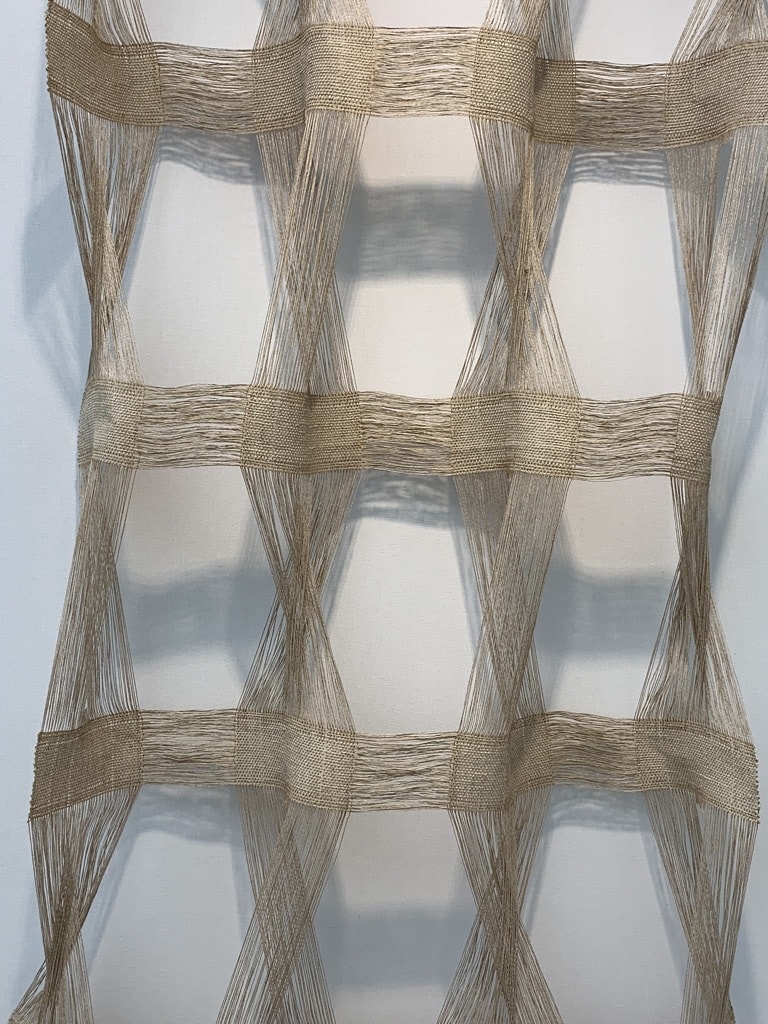The 15th edition of Collect, presented by the Crafts Council UK, was held at London's famous Saatchi Gallery from February 8th through March 3rd, 2019. Much like Collect 2018, Collect 2019 provided an opportunity to discover and invest in exceptional work — much of which was made exclusively for the fair.
This year's show brought together 45 international galleries from across the globe, each curating their own displays to sell work made in the last five years by the world’s leading contemporary artists and designers. Alongside the galleries, Collect Open provides a platform for 15 individual artists to show ambitious and conceptual craft-led installations.
Contributor Fiona Coleman attended Collect 2019 for THE KINDCRAFT and selected ten notable artists across both shows for her round-up.



For the first time, the historic stairwells of the Saatchi Gallery featured work from two different international artists: ‘Gravity in Pray’, by US-based Chinese artist Wanying Liang, is a dramatic porcelain sculpture framed by cut paper streamers. ‘The Bird’, by Seoul-based Korean robotics engineer and artist Wonseok Jung, is an interactive lighting installation that alters our perception of space and time.
Broken Ocean
One of my favorite exhibits at the whole show was also the award winner for Collect Open. Broken Ocean is the outcome of a collaboration between creative campaigner, Sophie Thomas and Glass artist, Louis Thompson. It represents the challenge of the colossal flow of plastic pollution that runs into our seas every minute of every day. Following the success of Sophie and Louis’ ‘The Seven Stages of Degradation’ and ‘Ghostnet Chandelier’, this new installation piece continues looking at the theme of ocean plastic. Working with hand-blown glass and waste glass fragments, found ocean plastic and recovered ghost nets, it references the chaotic beauty of an entangled ghost net being pulled out from the deep ocean.

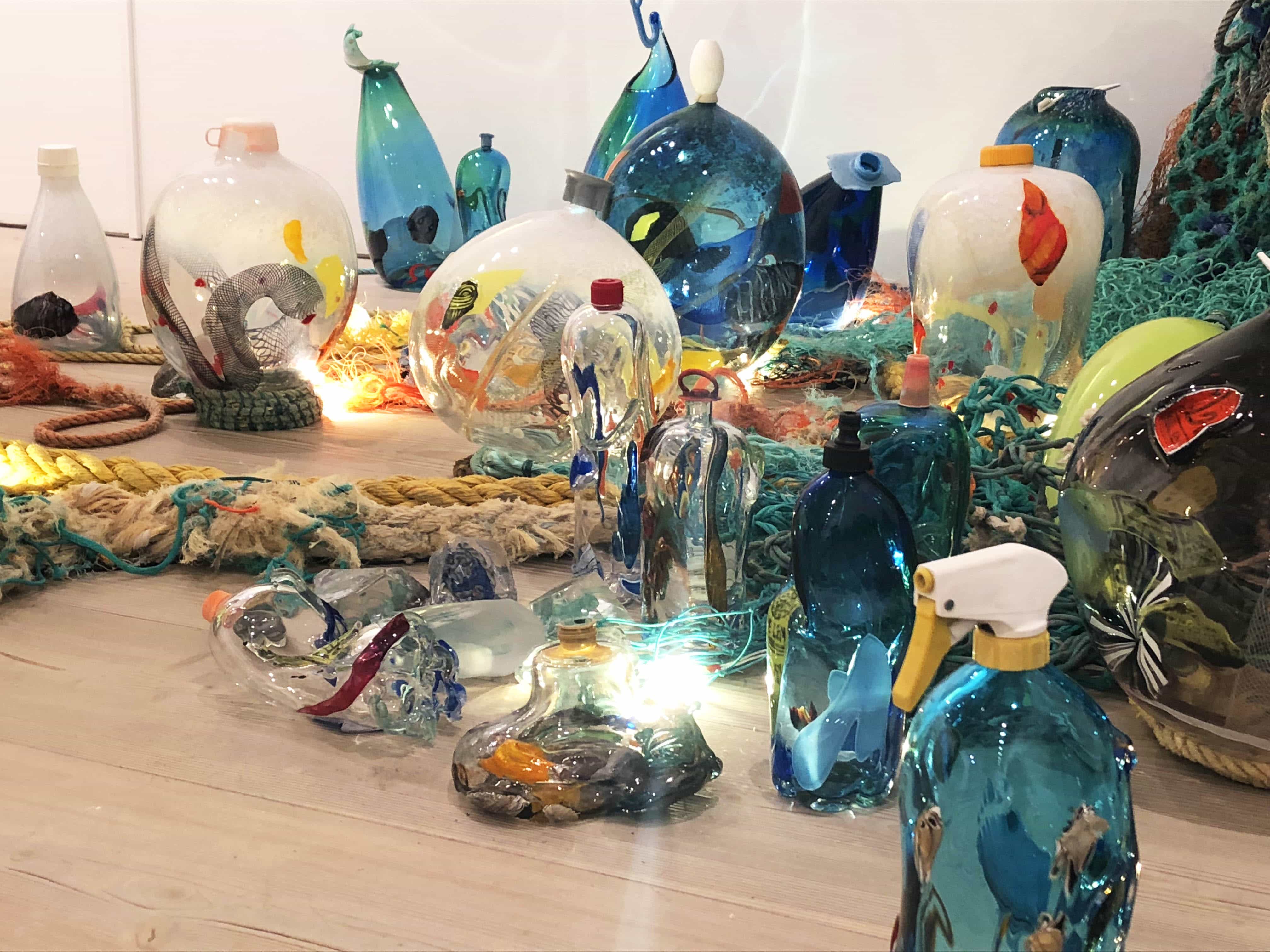






Kay Aplin
Fire and Water is a continuation of Kay Aplin’s investigation into micro-flora which has been the focus of her practice since 2013. This work builds on her collaboration with sound artist Joseph Young and, together, the artists have been researching how we view (and listen to) the landscape. Through their collaborative work, they challenge traditional representations of landscape in the gallery space. Aplin’s technique involves the use of a digital microscope to uncover hidden details in plant life which, when magnified, reveal highly textured — and surprising — designs that become the basis for tile sculptures. ‘Fire’ refers to the wood-firing technique used to fire the ceramics while ‘water’ references the source of the plants — a natural spring in Asturias, Spain. Fire and water together with clay (earth) produces a mixed media experience that extends our understanding of form and texture in relation to landscape.





Jan Bowman
The installation ‘Murmuration’ comprises four large scale, hand woven works which interpret the amazing spectacle of starling murmurations. The first work echoes the flock's swooning orchestration of airborne acrobatics and the ephemerality, grace, and beauty of the starlings' collective movement. Works two and three track the birds funneling and dropping into the roost. The final piece represents the birds leaving their roost, few by few, at dawn to join the vast space and freedom of the sky.
‘Murmuration’ is underpinned by Jan’s research into ‘Rhythms in Nature’: Considering how natural rhythms impact on the individual, biologically and psychologically, harnessing something of the ‘healing energy of nature’.





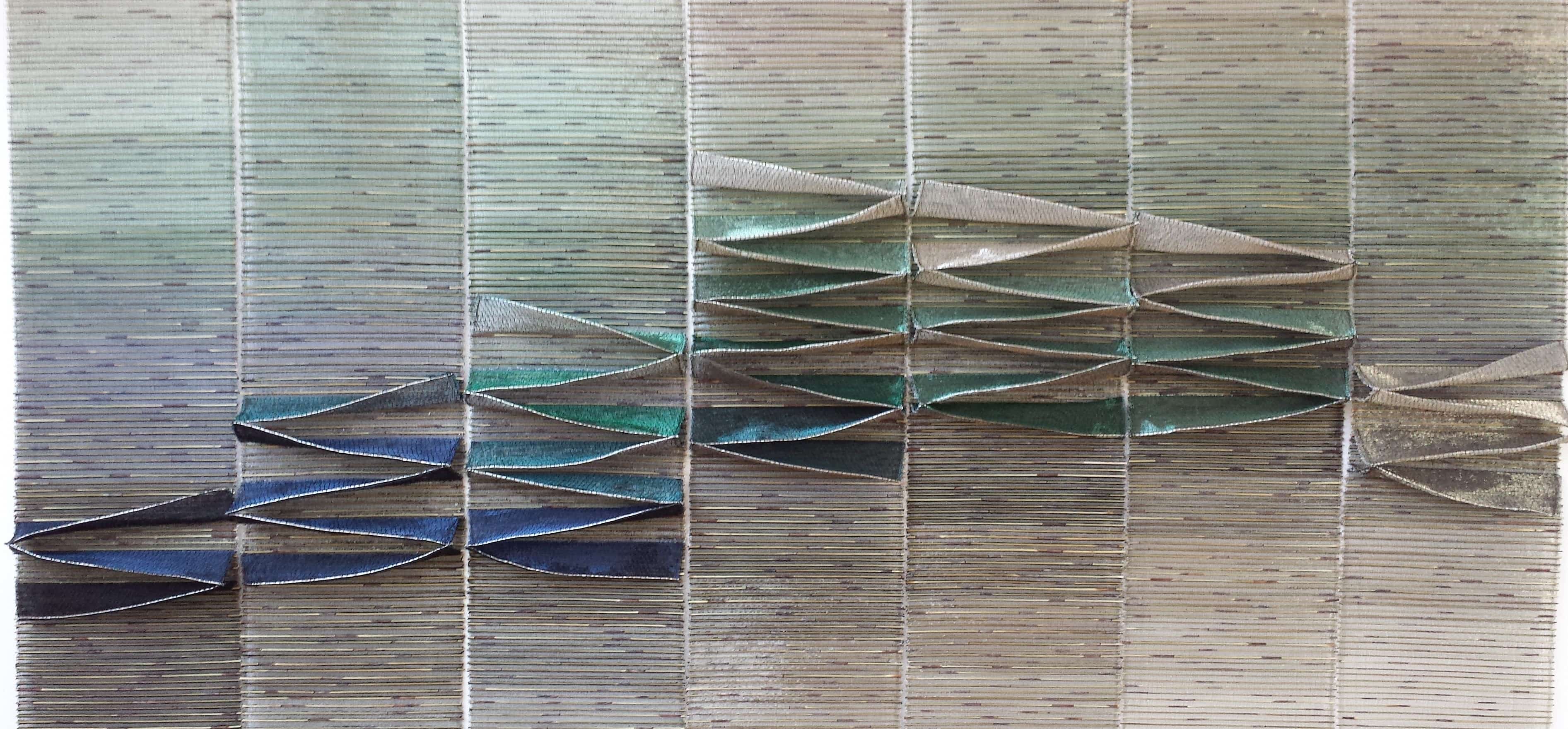
Katharine Swailes
For Collect Open, Katharine Swailes exhibited her new work ‘Glyphs and Loops - the Constellations’. Using finely handwoven intricate tapestry, Swailes arranges elements on an invisible timeline which, all together, references the world’s place in the solar system. Viewed as stone tablets on a wall and evoking calendar systems of ancient worlds, the abstract works appear deceptively simple and minimal in construction.
Carefully controlled qualities of tone, color, pattern, surface, and volume give the work a visual coherence and are inspired by the contemplation of ancient pre-Columbian textiles. Arrived at through a long, meditative process of weaving, Swailes says these works are imbued with hand-weaving history. “The natural fibers used are central to my weaving practice, the linens and cottons are chosen with possible longevity held by the ancient textiles.”
This expansive series sits as a diminutive constellation in the Universe: Glyphs and Loops reflect the duality of humanity, the organised rational of the glyphs, and the emotion of the loops.
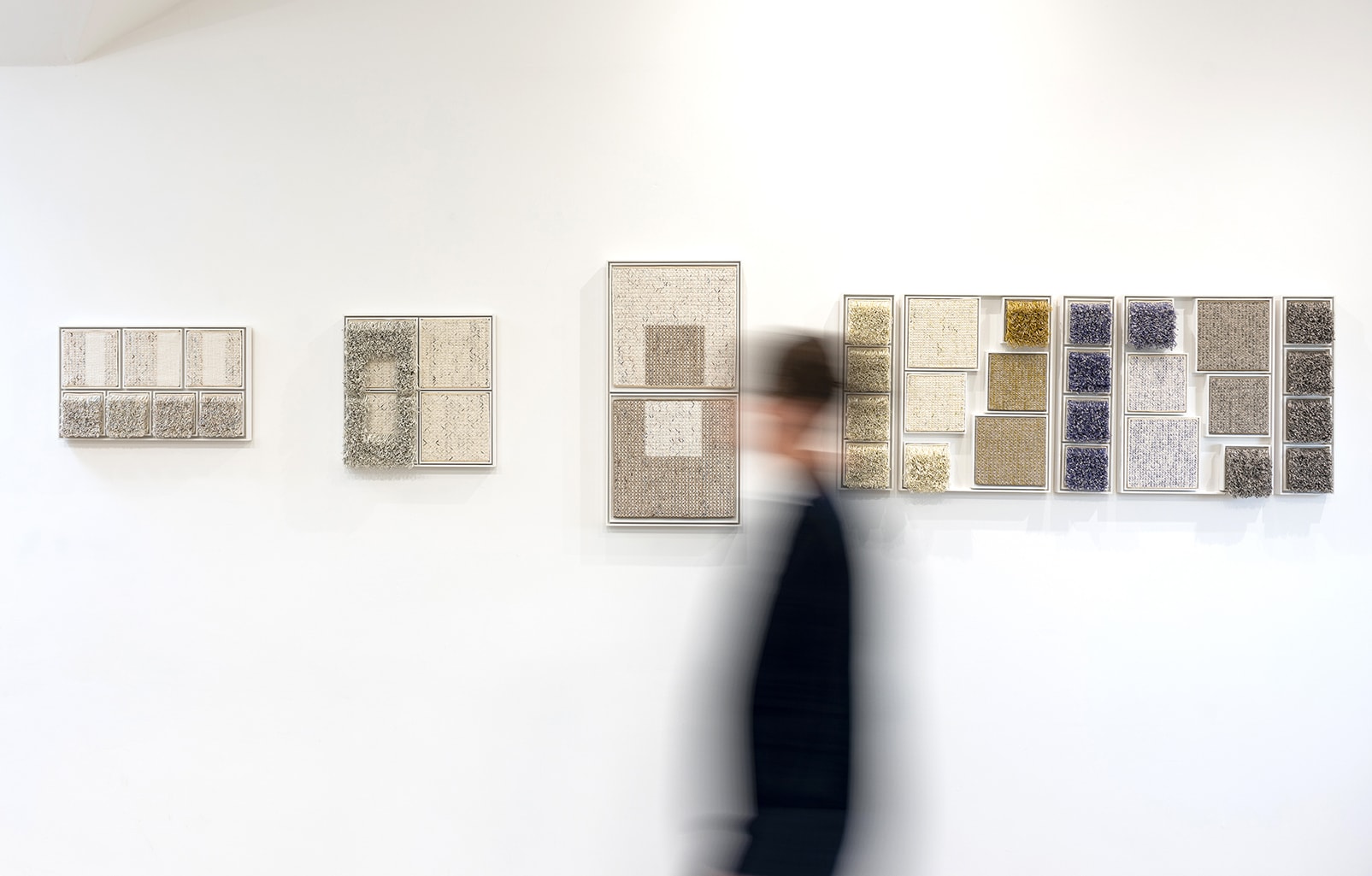




Vessel Gallery: Vanessa Hogge, Amy Hughes, Olivia Walker
Founded in 1999, Vessel Gallery represents British and international contemporary studio artists. It is now one of the leading galleries for art glass in the UK, but also specializes in works created with ceramic, metal, and wood. It was the beautiful complementary work of a trio of ceramicists that caught our eye as we walked past.
Vanessa Hogge
Inspired by her passion for all things botanical, Hogge breathes life into her clay in the form of dahlias, chrysanthemums, agapanthus, daisies, agaves, and roses. Grounded by years of expertise in ceramics, she takes an instinctive, visceral approach to each piece — painstakingly sculpting every petal and anther by hand so that no two flowers are identical.





Amy Hughes
Amy Hughes's collections aim to bridge the gap between the past and the present, finding a new home in contemporary culture for such objects. In contrast, the clay body and its material qualities are both elevated and celebrated through fresh interpretation. Her pieces are textured and stripped back to highlight a natural surface richness which has no need for further embellishment.



Olivia Walker
Walker works in porcelain to create pieces that explore ideas of growth and decay through the construction and layering of complex surfaces. All of her pieces start by being thrown on the wheel before being built upon with thousands of individually applied fragments of porcelain. Many of her pieces are thrown and altered, often being cut away and reassembled in the leather-hard stage which allows her to deconstruct the form, creating new surfaces on which to continue adding her porcelain layers.

Petronilla Silver: Ismini Samanidou
Petronilla Silver has been exhibiting fine and applied work by up-and-coming artists since 2007. She specializes in work where craft and art collide. For Collect 2019, the textile artist Ismini Samanidou exhibits two new weavings made especially for the show.
Ismini’s practice crosses the boundaries of art and design, using both digital technology and traditional craft techniques to explore how materials can articulate narratives and space. In 2014, Ismini spent three months at the Josef and Anni Albers Foundation in Connecticut, USA, as their first-ever weaving artist-in-residence. There she had unprecedented access to the archive of Anni Albers’ work and writings and her time at the Foundation inspired a new stage in her own practice of experimental work in drawing, photography, and hand-weaving.







Galerie Chevalier: Aurélie Mathigot
Galerie Chevalier in Paris specializes in tapestries: antique, modern and contemporary works, and fiber art. Highlighted among the contemporary artists who use, adapt, or divert the medium for the 21st Century was the work of Aurélie Mathigot, a French visual artist born in 1963. She bases her artistic approach on observation of everyday life, and by changing the scale, proportions and, sometimes, by eliminating the depicted object's initial function.
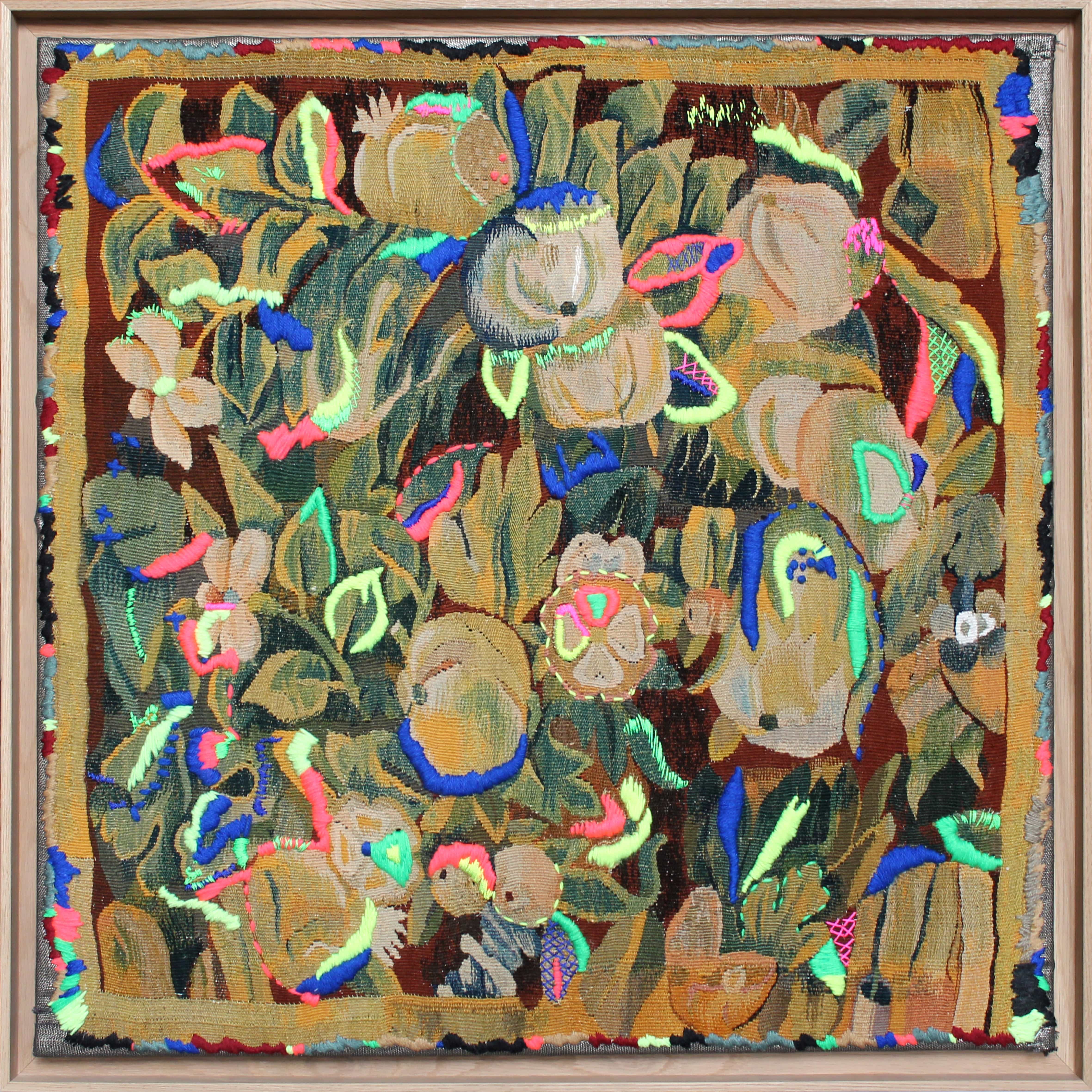

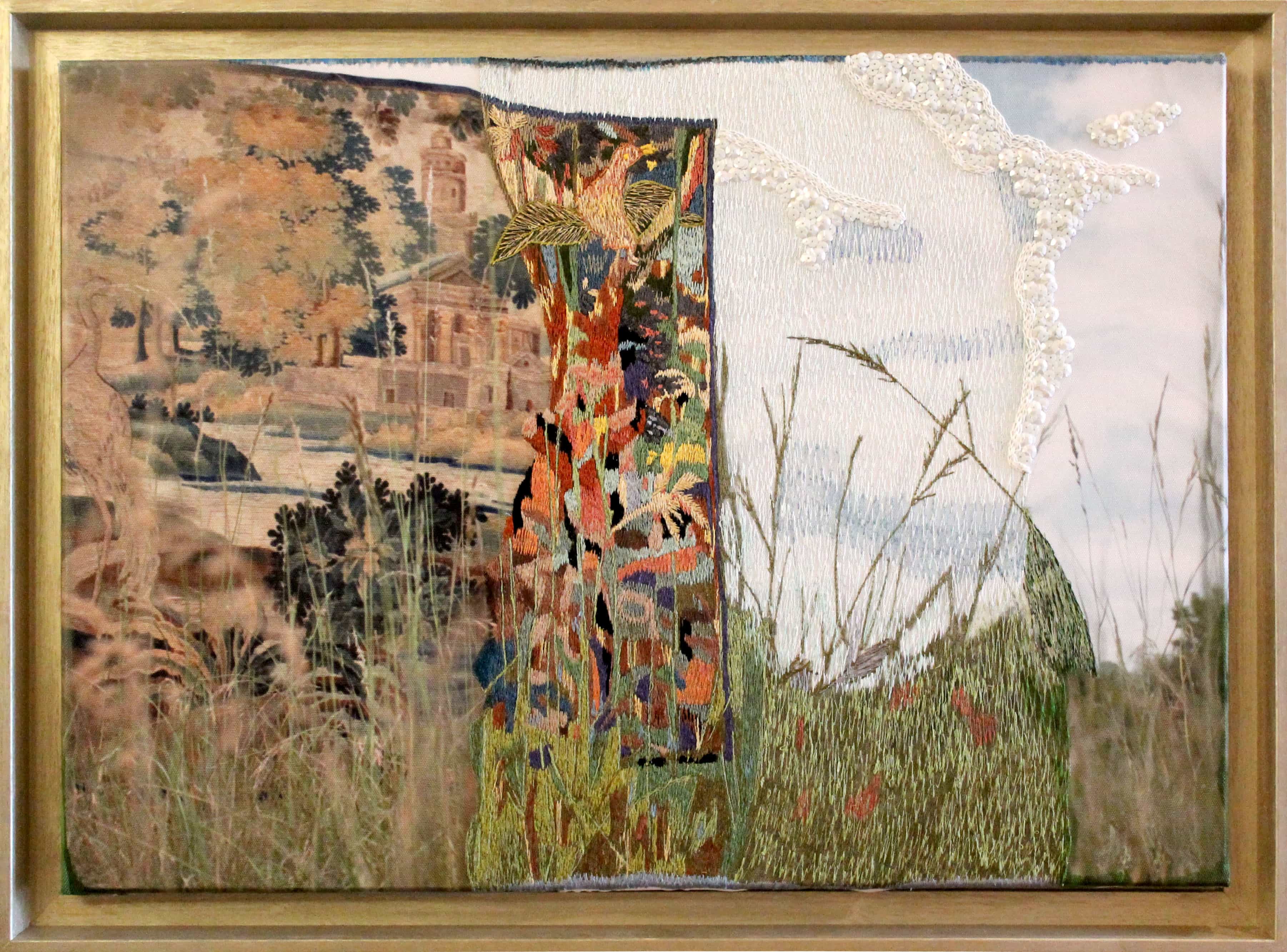
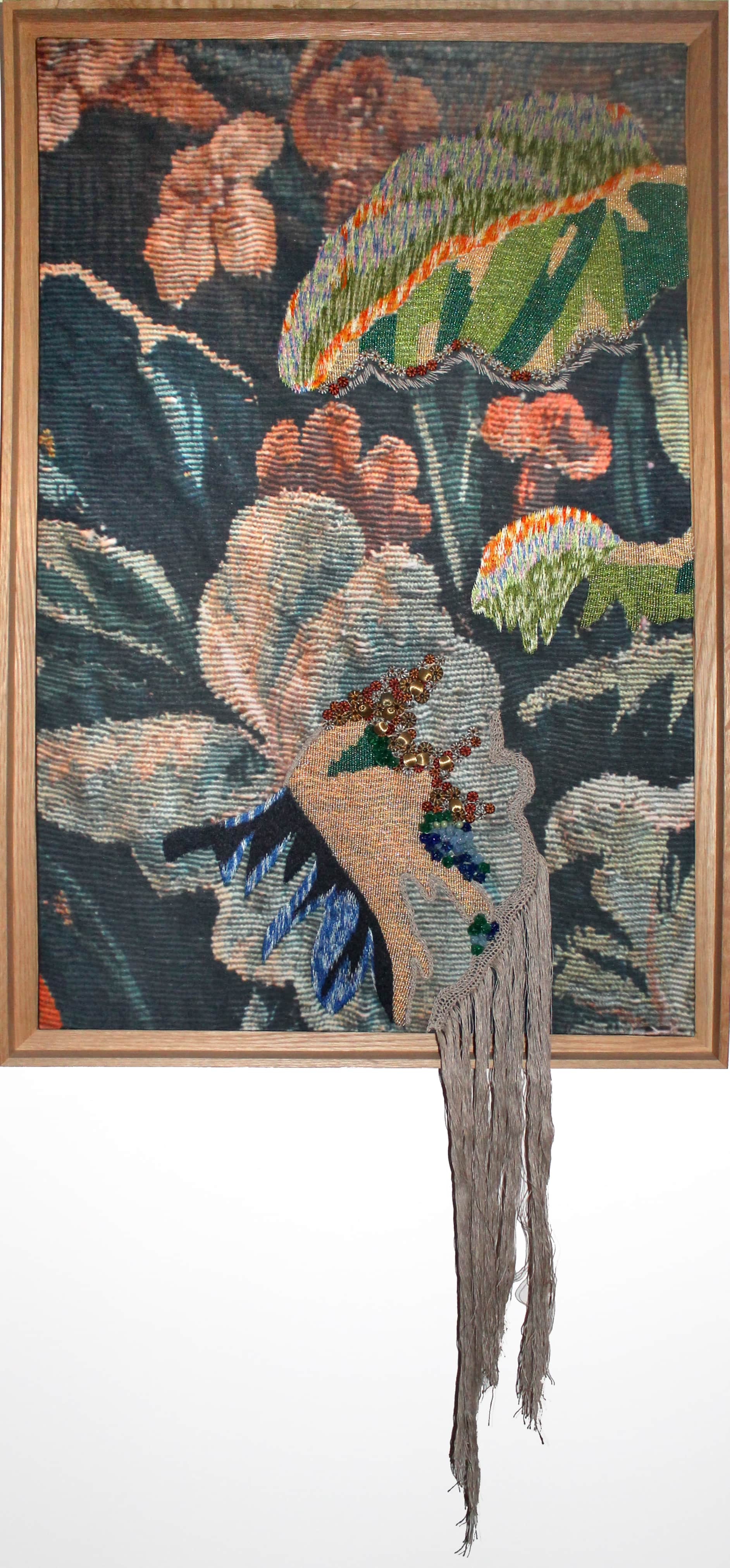
Bullseye Projects: Joshua Kerley
Based in Portland, Oregon, Bullesye Projects explores contemporary glass with makers and designers. Joshua Kerley, one artist shown at Collect 2019, specializes in kiln-formed glass and mixed media. Kerley roots his practice in experimentation and engagement with materials and processes. Taking inspiration from architecture, interiors, and construction, his assemblages exploit the metamorphic capabilities of glass — paying particular attention to the junctions between adjoining components and the transition from one material to another. Through the playful juxtaposition of glass with other media, he strives to challenge perceptions of materials and their inherent hierarchies.




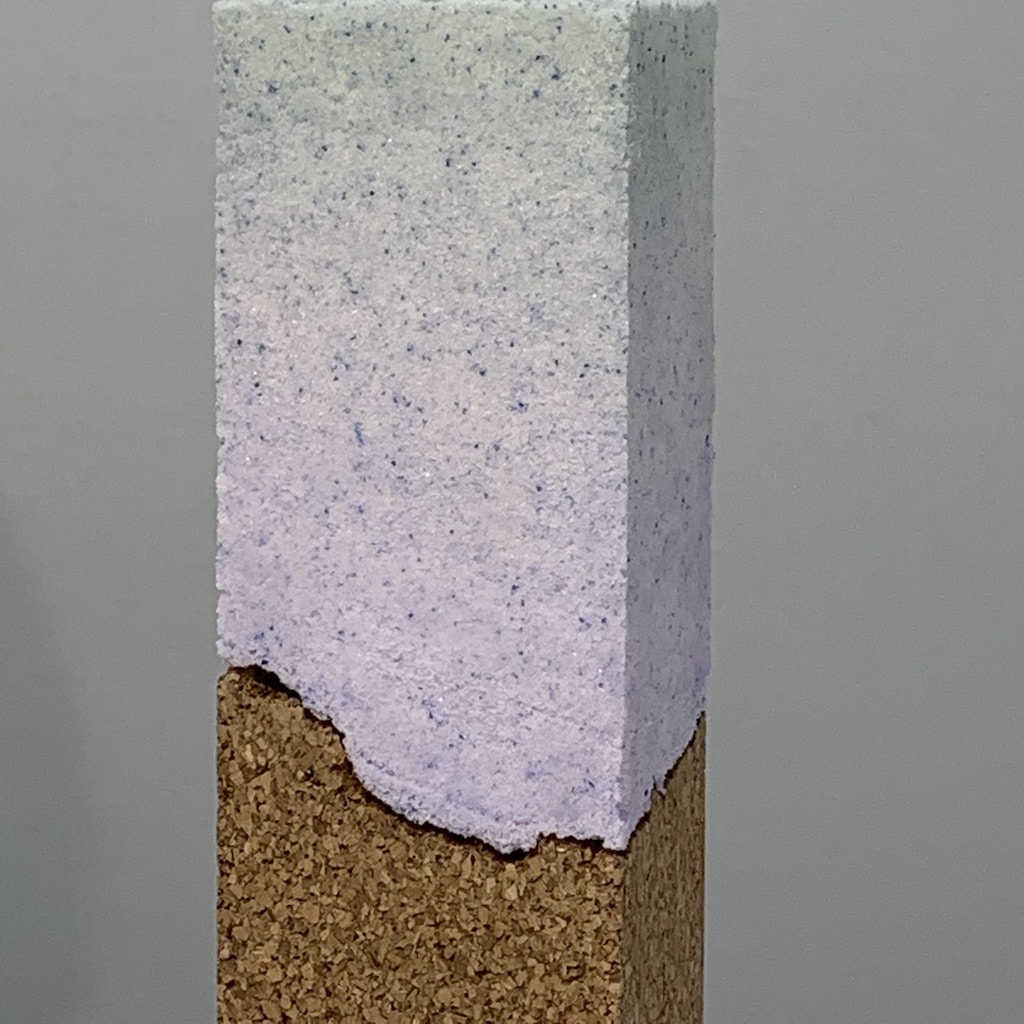

SEE••DS: Silo, Jochen Holz, Milia Maroun
SEE••DS is an ever-evolving critical platform for the production and exhibition of experimental pieces, moving between art and design, concept and craft, form and function. They believe in a human-centered approach to daily life and have commissioned pieces that fit this philosophy. We've picked out a few of the many exceptional examples showcased at Collect 2019.

Dyed marble table by SILO
Silo Studio is the collaboration of Attua Aparicio and Oscar Lessing, who formed the partnership while studying at the Royal College of Art. Silo focuses on finding new ways of making, searching the potential of materials and processes. Dyed marble innovates by treating a classical material in a contemporary way, bringing new possibilities in color and pattern to natural stones.


Colored bark & iridescent vases by Jochen Holz
Continuing his work combining wood and glass, Jochen’s aim was to combine colored glass with the effects of shaping and texturing the hot glass by pressing it onto burned wood. Holz further enhances the effect with a special flame-applied iridescent luster finish.




Kimabaya by Milia Maroun
Since 2016, fashion designer and textile artist Milia Maroun has created one-off and limited edition Kimabaya, which are sold through private sales and exhibitions. The robe is a fusion of the iconic Middle Eastern abaya with aspects of the traditional Japanese kimono in a unique cross-cultural crafted design. Maroun made this piece in collaboration with Nada Debs, a Lebanese designer who grew up in Japan, for a perfect synthesis of minimalism and expression. The resulting Kimabaya is a beautiful blend of influences and styles in which parts of the skeleton, often used in Japan as the basis for clothing design, are picked out in delicate mother-of-pearl, imitating the spine.




Oxford Ceramics Gallery: Peter Collingwood
The Oxford Ceramics Gallery represents the work of Peter Collingwood (1922-2008), a master craftsman, teacher, and author of several works on weaving. Born in London, Collingwood trained as a doctor, but subsequently worked with several distinguished weavers. Setting up a workshop in Archway, north London, he combined making with college teaching. In 1957, he became an artist-in-residence at the Digswell Arts Trust, meeting Hans Coper, with whom he had a memorable joint exhibition at the V&A in 1969.
In 1964, Collingwood established a workshop near Colchester. He was a great technical innovator, creating a new language for woven forms which gave them translucency and a poetic sense of weightlessness. Notably, his ‘macro gauze’ wall-hangings show traditional skill and visual abstraction working in perfect harmony. Collingwood made his works by moving segments of a number of warp threads, crossing them over so that, instead of following parallel vertical lines, the warp threads cross each other at different angles and create new graphic shapes (even three-dimensional ones).






